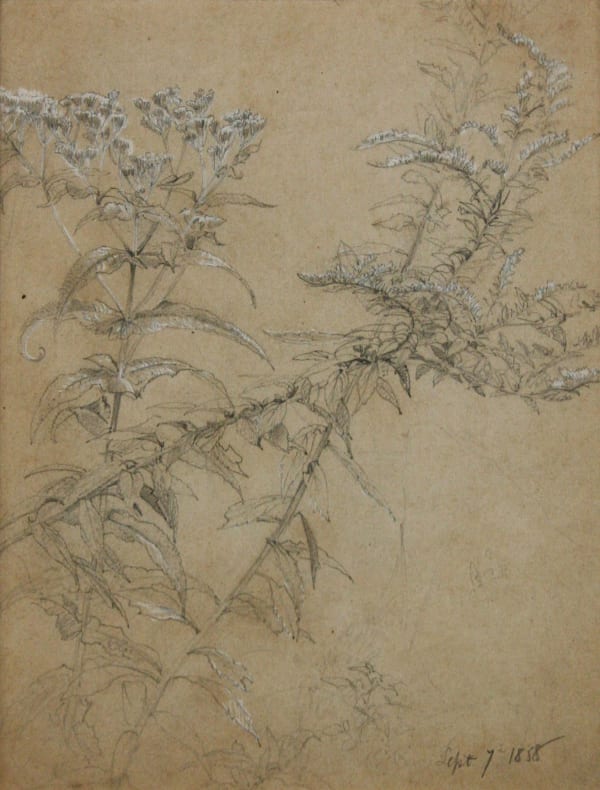William Trost Richards 1833-1905
A native of Philadelphia, William Trost Richards had a fifty-year career as a noted landscape and marine painter whose mature work combined extremely detailed aspects of nature with atmospheric qualities. He was especially innovative for his time, because he borrowed informal composition techniques from the Pre-Raphaelites of England, painting lights and colors outdoors as he actually observed them. His formal education ended at age thirteen when he quit school to support his family by working as a commercial draughtsman designing ornamental metal fixtures. He studied painting privately with William Stanley Haseltine and Paul Weber from whom he learned a meticulous graphic technique. He was supported by local persons in Philadelphia who financed a year of study in Europe from 1855 to 1856, and in 1867, he went abroad for a second time. He did numerous pencil drawings and paintings of Italy and Switzerland and much painting along English coasts.
By the 1850s, he had decided that landscape was his favorite subject matter and was especially inspired by American poetry but was much more inspired by American landscape painting, especially that of John Kensett and Frederic Edwin Church. He did a series of brilliant Adirondack landscapes and also coastal landscapes and marine subjects from New Jersey to Maine. During the latter part of his career, he was firmly established as a coastal and marine painter, ever fascinated by the tumultuous phenomenon of water hitting rocks and beach. Richards received a medal at the Centennial Exposition in Philadelphia in 1876; the Temple Medal from the Pennsylvania Academy of the Fine Arts in 1885 and a Bronze Medal at the Paris Exposition in 1889. He was a member of the American Water Color Society and an honorary member of the National Academy of Design, where he exhibited from 1861 to 1899. William Trost Richards died in Newport, Rhode Island in 1905. In 1973, he was honored with a retrospective exhibition at the Brooklyn Museum and the Pennsylvania Academy of the Fine Arts.
His work is represented in the collections of the Boston Museum of Fine Arts, the Brooklyn Museum, the Newark Museum, Fogg Art Museum of Harvard University, St. Louis Art Museum, the Adirondack Museum, Smithsonian Institution, Cooper-Hewitt Museum, Cleveland Museum of Art, Metropolitan Museum of Art, Vassar College Art Gallery, Corcoran Gallery of Art, and the Pennsylvania Academy of the Fine Arts.





